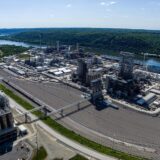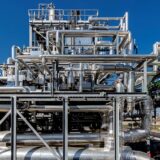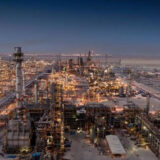Shell announces final investment decision on petrochemical complex in Pennsylvania
Shell Chemical Appalachia LLC said it will proceed with the construction of a major petrochemical complex, comprising of an ethylene cracker with polyethylene derivatives unit, near Pittsburgh, Penn., U.S.A. Main construction will start in approximately 18 months, with commercial production expected to begin early in the next decade.
The complex will use low-cost ethane from shale gas producers in the Marcellus and Utica basins to produce 1.6 million tonnes of polyethylene per year. Polyethylene is used in many products, from food packaging and containers to automotive components.
The facility will be built on the banks of the Ohio River in Potter Township, Beaver County, about 30 miles northwest of Pittsburgh. As a result of its close proximity to gas feedstock, the complex will benefit from shorter and more dependable supply chains, compared to supply from the Gulf Coast. The location is also ideal because more than 70% of North American polyethylene customers are within a 700-mile radius of Pittsburgh, Shell said.
“Shell Chemicals has recently announced final investment decisions to expand alpha olefins production at our Geismar site in Louisiana and, with our partner CNOOC in China, to add a world-scale ethylene cracker with derivative units to our existing complex there,” said Graham van’t Hoff, executive vice president for Royal Dutch Shell plc’s global chemicals business.
“This third announcement demonstrates the growth of Shell in chemicals and strengthens our competitive advantage.”
Up to 6,000 construction workers will be involved in building the new facility, and an expected 600 people will be employed when the plant is completed.
Shell Chief Executive Officer Ben van Beurden said yesterday that its chemicals business, together with deep water exploration and production in Brazil and the Gulf of Mexico, are growth priorities for the company.
“Shell has advantaged positions and affordable growth plans here, which should create a pathway to improved returns and material free cash flow from around 2020, as these businesses become new cash engines,” he said.
“Today we are announcing the final investment decision on a new, 1.5 million tonnes per annum (mtpa) cracker and polyethylene plant in Pennsylvania, U.S.A., which will use natural gas from shales production as its feedstock. Once these projects are on stream, early in the next decade, Shell’s ethylene capacity should reach around 8 mtpa, compared with 6.2 mtpa today,” he added.
Shell’s deep-water production could double to 900 thousand barrels of oil equivalent per day (kboed) in 2020, compared with 450 kboed in 2015, he said.
“We give priority to growth projects in these businesses, such that free cash flow may be negative at the lower end of the cycle. Returns should improve over the next 3-5 years,” he said.
While it will develop Brazil and the Gulf of Mexico which “represent the best real estate in global deep water,” he also announced that Shell will dispose of up to 10% of its oil and gas production, including exiting five to 10 countries.
Asset sales, as planned, are expected to be USD 30 billion for 2016-18, he said. “We expect to make significant progress on the first USD 6-8 billion of this programme in 2016,” he added.
With these and other cuts, Shell expects returns to improve in the next few years, reduce its debt arising from the BG acquisition and significant growth in free cash flow, across a range of oil prices.
Organic free cash flow could reach USD 20-25 billion and return on capital employed around 10% by the end of the decade, assuming USD 60 per barrel crude oil prices, he said.
“This compares to 2013-15 averages of USD 12 billion and 8% with average USD 90 oil prices.”
Shell’s capital investment will be in the range of USD 25-30 billion each year to 2020, he said, “as we improve capital efficiency and ensure a more predictable development funnel for new projects.”
“In the prevailing low oil price environment we will continue to drive capital spending down towards the bottom end of this range; or even lower if needed. In a higher oil price future we intend to cap our spending at the top end of the range.”














